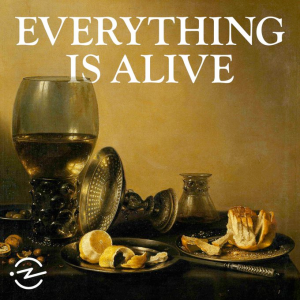One of my favourite podcasts is the series Everything Is Alive. It’s extremely original and funny: some everyday objects are interviewed about their life and experiences. Each episode is about 15 minutes long and you can download the audio and the transcript.

As soon as I first discovered it I thought: “I can use this idea in class”. And I have, and it was fun. The level of the students was C1, but the activity can be done with students from B2 to C2 levels.
Step 1: Listen to and read a model
I play the beginning of one of the episodes, Maeve, Lamppost in which she introduces herself: where she lives, and things that define her. As they don’t know it is a lamppost who is speaking students are confused and don’t understand much. The moment I tell them it’s a lamppost the perspective changes and they get most of the message. I show them a section of the transcript and play a few minutes of the episode with them reading at the same time. It is not a listening exercise, it is a model they will imitate in their activity, so they must get the sense of humour and the jokes derived from the fact that it is an object’s perspective about human life.
Step 2: Create the character
I tell them they are going to interview an object that can tell us stories about the humans around it. They work in pairs or in threes, and choose the object, and invent its history: Where was it “born”? Does it have “family” or “friends”? Does it like where it is? Is it happy? Why/not? Was it witness of any funny/sad/embarrasing, etc story by a human? They must decide its pronouns as well.
Step 3: Interview the character
Once they have decided about these basic features of the story, I tell them they are going to record an episode of a podcast called “Everything is Alive, Mieres Edition” and they have to decide who is going to play the host and who is going to be the guest. Together they prepare the introduction and the questions, but they shouldn’t script the answers because it will sound more natural and funny if they improvise a bit (even though they know what they are going to be asked, they shouldn’t read).
Step 4: Create the podcast
You don’t need sophisticated equipment to record this. The outcome is not that important. The fact that it is going to be recorded creates a tension that makes students try harder and they feel stressed in a good way that makes the activity more fun. I used an app included in my iPad, but you can use a mobile phone or a laptop with the app Audacity. You can edit the audio later using IA to enhance the sound.
My students had a good time creating the stories and they spoke and wrote notstop for over an hour. One of them commented that she liked the fact of being obliged to be creative because we don’t normally have to do it and it is fun!